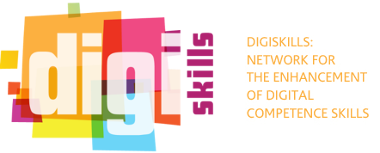A Teacher’s Blog for ICT integration

| Rate | |||
| Criteria Evaluation | |||
transferable adaptability innovative acceptability impact effectiveness availability creativity collaborative
EL
ES
HR
DE
FR
HU
PL
View the translated version |
|
EL
ES
HR
DE
FR
HU
PL
View the translated version |
|
EL
ES
HR
DE
FR
HU
PL
View the translated version |
|
EL
ES
HR
DE
FR
HU
PL
View the translated version |
|
EL
ES
HR
DE
FR
HU
PL
View the translated version |
|
EL
ES
HR
DE
FR
HU
PL
View the translated version |
|
The good teaching practice at a glance
social
Teacher
Secondary Education
A place to share thoughts and problems and practical tips of ICT integration in everyday teaching practices to and from practicing teachers. Soon it became the hub of ICT practices.
The primary appeal of the website is that it is a grassroots initiative, with teachers discussing real issues as they emerge in the classrooms,” says Prievara. "As we say, we are not in the command seat of ICT but report from the front lines or – if you like – the trenches.”
2013-05-14 12:30:00 - 2013-05-14 12:30:00
Easy
Detailed description
This grassroots initiative is providing tools, methods and practices to Hungarian teachers to integrate ICT practices into their work. It takes advantage of the resources already at disposal; he changes his colleagues’ perspective about education.
In Hungary there is a gap of expertise in the educational food chain as far as ICT is concerned. Most university professors have not had any first-hand experience of either teaching or being taught using ICT. Soon the first generation of teacher trainees with such experience – at least in their secondary or primary schools are being trained. Theoretical works abound, yet you sometimes cannot help but wonder how ICT will find its way to the new generation of teachers when very few of their professors use any technology. As a result, most of the training materials are either very broad or theoretical (e.g. should we use Facebook in education?) or very technical (e.g. The blog challenges the idea that for a teacher working ICT into daily teaching is simple. Teachers in Hungary are overworked and underpaid. Also, they seem to lack the technology and the equipment to get ahead.
The primary appeal of the website is that it is a grassroots initiative, with teachers discussing real issues as they emerge in the classrooms. It is a pool of resources of interactive e-learning materials and thousands of teachers take part in the face-to-face trainings. Ideas such as the flipped classroom, the meaningful adaptation of the concept of gamification, personalized learning paths and a new approach to assessing student work have now been implemented in a number of schools in Hungary and there is an ever-growing community of teachers spreading these new ideas to colleagues in their local communities.
They have designed a low-cost (basically no-cost) ICT integration model that could be adopted in most schools in Hungary, making use of what teachers and students already have at their disposal. He concentrated on applications that are free and experiments with and shares them, working out integration methods as well.
As a simple teacher, Tibor listened to education experts at conferences sharing their vision of the future, where at a point they looked at the audience of teachers and say “now it’s your turn to make these changes work and break them down for everyday use in the context of public education.” Having heard this so often, he decided to go for it and change the way he teaches completely to become a 21st century educator. This is involved defining individual learning paths for each of his students, using a different system to assess student progress, stressing the meaningful use of ICT and Web 2.0 applications to enhance learning (and not so much teaching), taking advantage of ‘the cloud’ to share and disseminate information, and implementing gamification by using a simple Excel worksheet.
Tibor set up a new pedagogical framework and then started looking for the simplest possible way to implement it in a manner that it becomes viable in the long run. Having to teach 30+ contact lessons, there is simply no other way. Technology is not an add-on in this system (i.e. its role is not to ‘spice up’ or make visually more digestible an otherwise boring lesson), but an integral part of the learning process, more emphasis is on students using ICT outside the classroom than in classes.
The best opportunity for innovation in education for him has proved to be ‘the cloud’. In Hungary, schools have just received a huge package of software (e.g. will be able to use Lynx), which will definitely open new vistas. Collaborative tools (OneNote), file sharing (SkyDrive) and tools facilitating synchronous and asynchronous communication will be available to all schools in the country. Unlimited storage, smooth communication and collaboration are a game-changer.
Today, the blog is running a regular roundtable for teachers on ICT in schools, organises accredited further educational courses
“First, everyone should understand that it is possible to make a difference. Many teachers (especially novice teachers) are discouraged by (what they perceive to be) depleted infrastructure in schools and claim they could do if only they had… and here com
Blog platform
| Country of origin | Hungary |
| Language of the practice | |
| Website related | Tanar Blog |
| Status of the practice | Final |
| Download full practice desciprion |
- ICT enabled learning - Using digital resources for face-to-face classroom practice & for online learning/blended classroom practice
- Community Building - Using digital resources to connect learners/build communities
- Quality and Assessment - Using digital resources to better assess learning
About the author
| Name of contributor | Tibor Prievara |
| Affiliation of contributor | English teacher, founder and editor-in-chief of the above blog |
| Institution where this practice was implemented | http://www.tanarblog.hu |
| Contact e-mail | suba@eden-online.org |
- Log in to post comments


